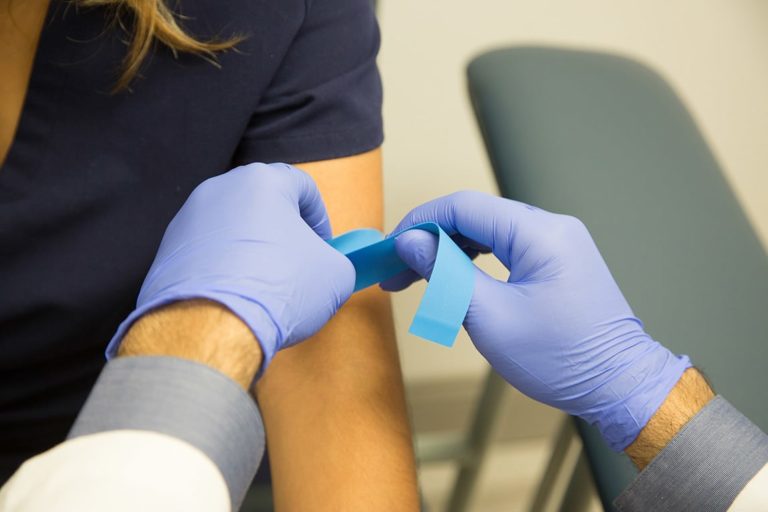The Single Strategy To Use For Northeast Medical Institute - New Haven Campus Phlebotomy Course & Cna Class
The Single Strategy To Use For Northeast Medical Institute - New Haven Campus Phlebotomy Course & Cna Class
Blog Article
Unknown Facts About Northeast Medical Institute - New Haven Campus Phlebotomy Course & Cna Class
Table of ContentsGetting The Northeast Medical Institute - New Haven Campus Phlebotomy Course & Cna Class To WorkFacts About Northeast Medical Institute - New Haven Campus Phlebotomy Course & Cna Class RevealedThe Main Principles Of Northeast Medical Institute - New Haven Campus Phlebotomy Course & Cna Class Northeast Medical Institute - New Haven Campus Phlebotomy Course & Cna Class Fundamentals Explained7 Simple Techniques For Northeast Medical Institute - New Haven Campus Phlebotomy Course & Cna ClassOur Northeast Medical Institute - New Haven Campus Phlebotomy Course & Cna Class Diaries
Nevertheless, the usage of such tools must be accompanied by other infection prevention and control methods, and training in their use. Not all security gadgets apply to phlebotomy. Prior to choosing a safety-engineered gadget, users must thoroughly examine readily available tools to identify their proper use, compatibility with existing phlebotomy methods, and effectiveness in securing staff and patients (12, 33).For settings with reduced resources, cost is a motoring aspect in procurement of safety-engineered tools. Where safety-engineered gadgets are not readily available, skilled use of a needle and syringe is acceptable.
In the blood-sampling space for an outpatient department or center, supply a comfy reclining sofa with an arm rest.
The Best Strategy To Use For Northeast Medical Institute - New Haven Campus Phlebotomy Course & Cna Class
Ensure that the signs for blood tasting are clearly specified, either in a created procedure or in documented guidelines (e.g. in a laboratory form). In all times, comply with the strategies for infection avoidance and control provided in Table 2.2. Infection avoidance and control techniques. Accumulate all the devices required for the procedure and place it within secure and simple reach on a tray or trolley, making sure that all the products are clearly noticeable.
Where the client is adult and conscious, adhere to the steps detailed below. Present yourself to the individual, and ask the person to state their full name. Examine that the lab form matches the patient's identity (i.e. match the patient's details with the research laboratory type, to make certain precise recognition). Ask whether the license has allergic reactions, fears or has actually ever fainted during previous injections or blood draws.
Make the patient comfy in a supine placement (when possible). Area a tidy paper or towel under the client's arm. Talk about the examination to be done (see Annex F) and get verbal authorization. The individual has a right to decline a test at any kind of time before the blood tasting, so it is important to make certain that the client has actually understood the procedure.
The smart Trick of Northeast Medical Institute - New Haven Campus Phlebotomy Course & Cna Class That Nobody is Discussing
Extend the individual's arm and inspect the antecubital fossa or lower arm. Find a blood vessel of a good dimension that is visible, straight and clear. The representation in Section 2.3, shows typical settings of the vessels, but many variants are possible. The typical cubital blood vessel exists between muscle mass and is usually one of the most very easy to puncture.
DO NOT place the needle where capillaries are diverting, due to the fact that this enhances the possibility of a haematoma. The vein needs to be visible without applying the tourniquet. Locating the vein will assist in determining the appropriate dimension of needle. Apply the tourniquet regarding 45 finger sizes over the venepuncture site and re-examine the vein.
Samplings from main lines carry a danger of contamination or erroneous research laboratory test outcomes. It is appropriate, but not ideal, to draw blood samplings when first presenting an in-dwelling venous device, before attaching the cannula to the intravenous fluids.
The Ultimate Guide To Northeast Medical Institute - New Haven Campus Phlebotomy Course & Cna Class
Enable the area to dry. Failure to allow enough call time boosts the threat of contamination. DO NOT touch the cleaned up website; particularly, DO NOT position a finger over the vein to direct the shaft of the exposed needle. It the site is touched, repeat the sanitation. Carry out venepuncture as follows.
Ask the client to develop a clenched fist so the capillaries are much more prominent. Enter the capillary quickly at a 30 level angle or much less, and remain to present the needle along the blood vessel at the most convenient angle of entrance - CNA Courses. When adequate blood has been gathered, release the tourniquet BEFORE taking out the needle
What Does Northeast Medical Institute - New Haven Campus Phlebotomy Course & Cna Class Do?
Withdraw the needle delicately and apply mild stress to the site with a tidy gauze or completely dry cotton-wool sphere. Ask the patient to hold the gauze or cotton woollen in location, with the arm expanded and raised. Ask the person NOT to bend the arm, due to the fact that doing so triggers a haematoma.

Not known Incorrect Statements About Northeast Medical Institute - New Haven Campus Phlebotomy Course & Cna Class
Where feasible, maintain the tubes in a shelf and move the shelf in the direction of you - https://dc-washington.cataloxy.us/firms/northeastmedicalinstitute.com.htm#google_vignette. If the example tube does not have a rubber stopper, inject very slowly right into the tube as decreasing the pressure and velocity made use of to transfer the my website specimen lowers the danger of haemolysis.

Report this page